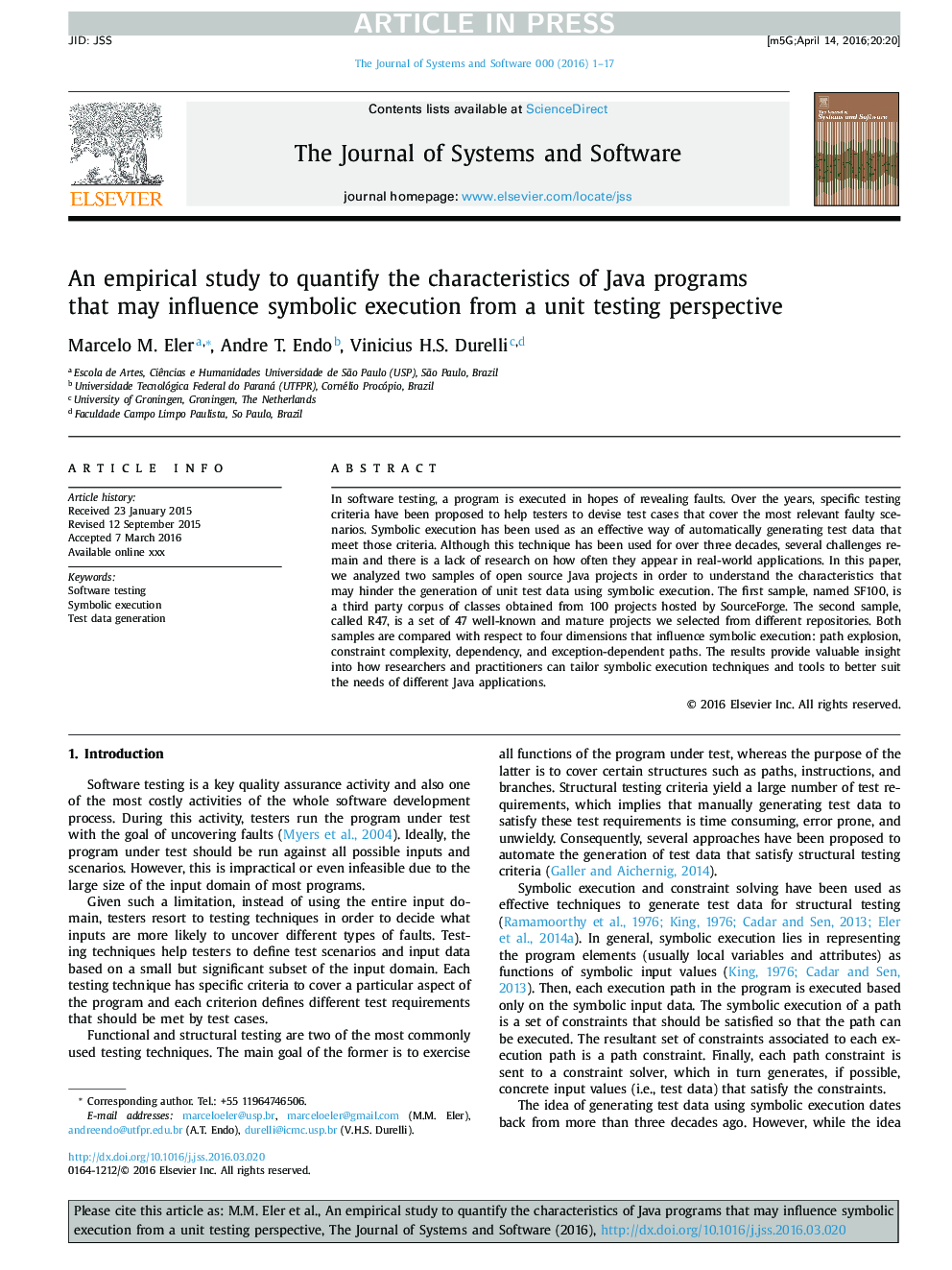| Article ID | Journal | Published Year | Pages | File Type |
|---|---|---|---|---|
| 6885455 | Journal of Systems and Software | 2016 | 17 Pages |
Abstract
In software testing, a program is executed in hopes of revealing faults. Over the years, specific testing criteria have been proposed to help testers to devise test cases that cover the most relevant faulty scenarios. Symbolic execution has been used as an effective way of automatically generating test data that meet those criteria. Although this technique has been used for over three decades, several challenges remain and there is a lack of research on how often they appear in real-world applications. In this paper, we analyzed two samples of open source Java projects in order to understand the characteristics that may hinder the generation of unit test data using symbolic execution. The first sample, named SF100, is a third party corpus of classes obtained from 100 projects hosted by SourceForge. The second sample, called R47, is a set of 47 well-known and mature projects we selected from different repositories. Both samples are compared with respect to four dimensions that influence symbolic execution: path explosion, constraint complexity, dependency, and exception-dependent paths. The results provide valuable insight into how researchers and practitioners can tailor symbolic execution techniques and tools to better suit the needs of different Java applications.
Related Topics
Physical Sciences and Engineering
Computer Science
Computer Networks and Communications
Authors
Marcelo M. Eler, Andre T. Endo, Vinicius H.S. Durelli,
